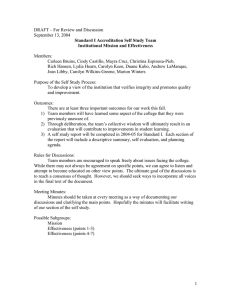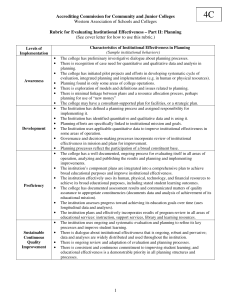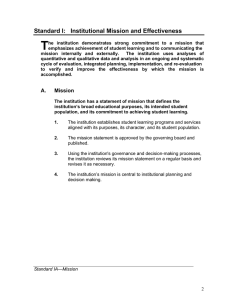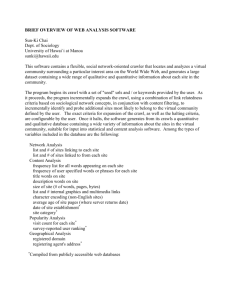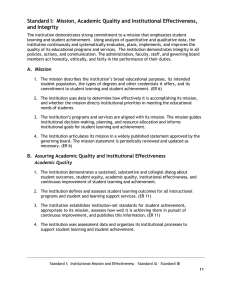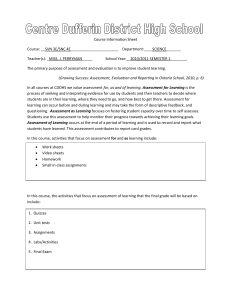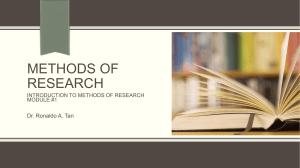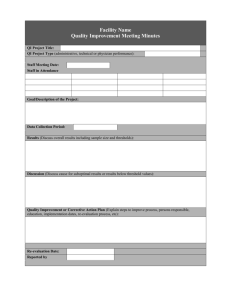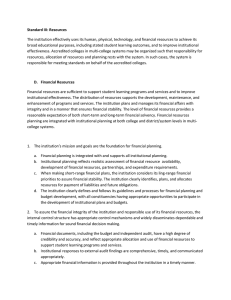Standard IB
advertisement
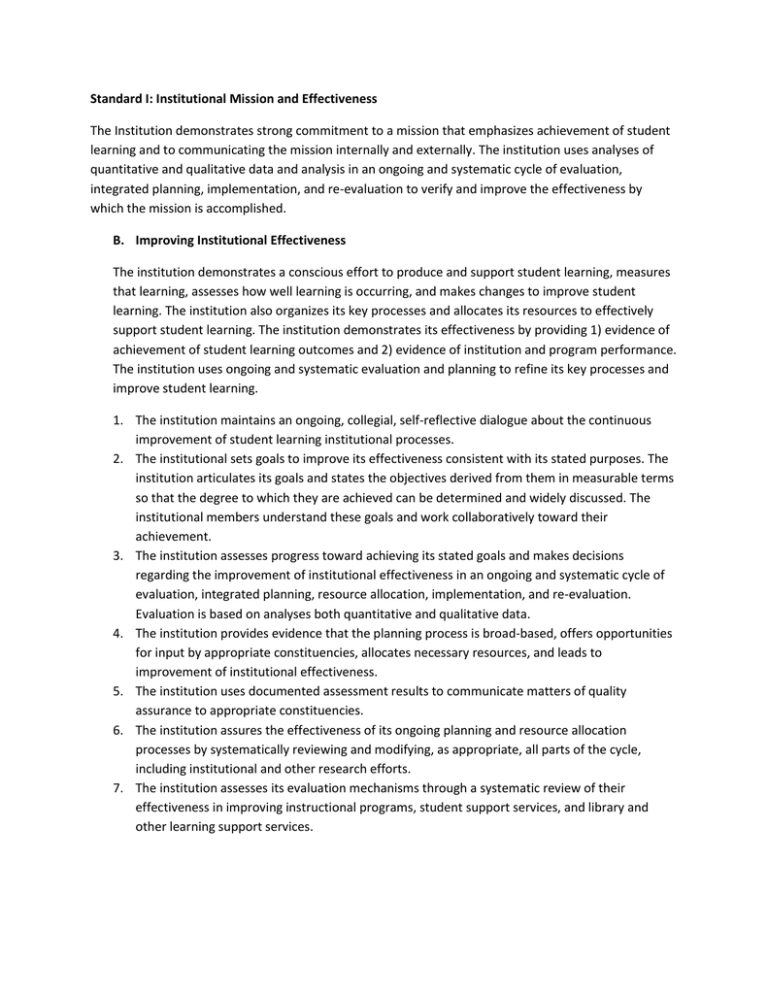
Standard I: Institutional Mission and Effectiveness The Institution demonstrates strong commitment to a mission that emphasizes achievement of student learning and to communicating the mission internally and externally. The institution uses analyses of quantitative and qualitative data and analysis in an ongoing and systematic cycle of evaluation, integrated planning, implementation, and re-evaluation to verify and improve the effectiveness by which the mission is accomplished. B. Improving Institutional Effectiveness The institution demonstrates a conscious effort to produce and support student learning, measures that learning, assesses how well learning is occurring, and makes changes to improve student learning. The institution also organizes its key processes and allocates its resources to effectively support student learning. The institution demonstrates its effectiveness by providing 1) evidence of achievement of student learning outcomes and 2) evidence of institution and program performance. The institution uses ongoing and systematic evaluation and planning to refine its key processes and improve student learning. 1. The institution maintains an ongoing, collegial, self-reflective dialogue about the continuous improvement of student learning institutional processes. 2. The institutional sets goals to improve its effectiveness consistent with its stated purposes. The institution articulates its goals and states the objectives derived from them in measurable terms so that the degree to which they are achieved can be determined and widely discussed. The institutional members understand these goals and work collaboratively toward their achievement. 3. The institution assesses progress toward achieving its stated goals and makes decisions regarding the improvement of institutional effectiveness in an ongoing and systematic cycle of evaluation, integrated planning, resource allocation, implementation, and re-evaluation. Evaluation is based on analyses both quantitative and qualitative data. 4. The institution provides evidence that the planning process is broad-based, offers opportunities for input by appropriate constituencies, allocates necessary resources, and leads to improvement of institutional effectiveness. 5. The institution uses documented assessment results to communicate matters of quality assurance to appropriate constituencies. 6. The institution assures the effectiveness of its ongoing planning and resource allocation processes by systematically reviewing and modifying, as appropriate, all parts of the cycle, including institutional and other research efforts. 7. The institution assesses its evaluation mechanisms through a systematic review of their effectiveness in improving instructional programs, student support services, and library and other learning support services.
